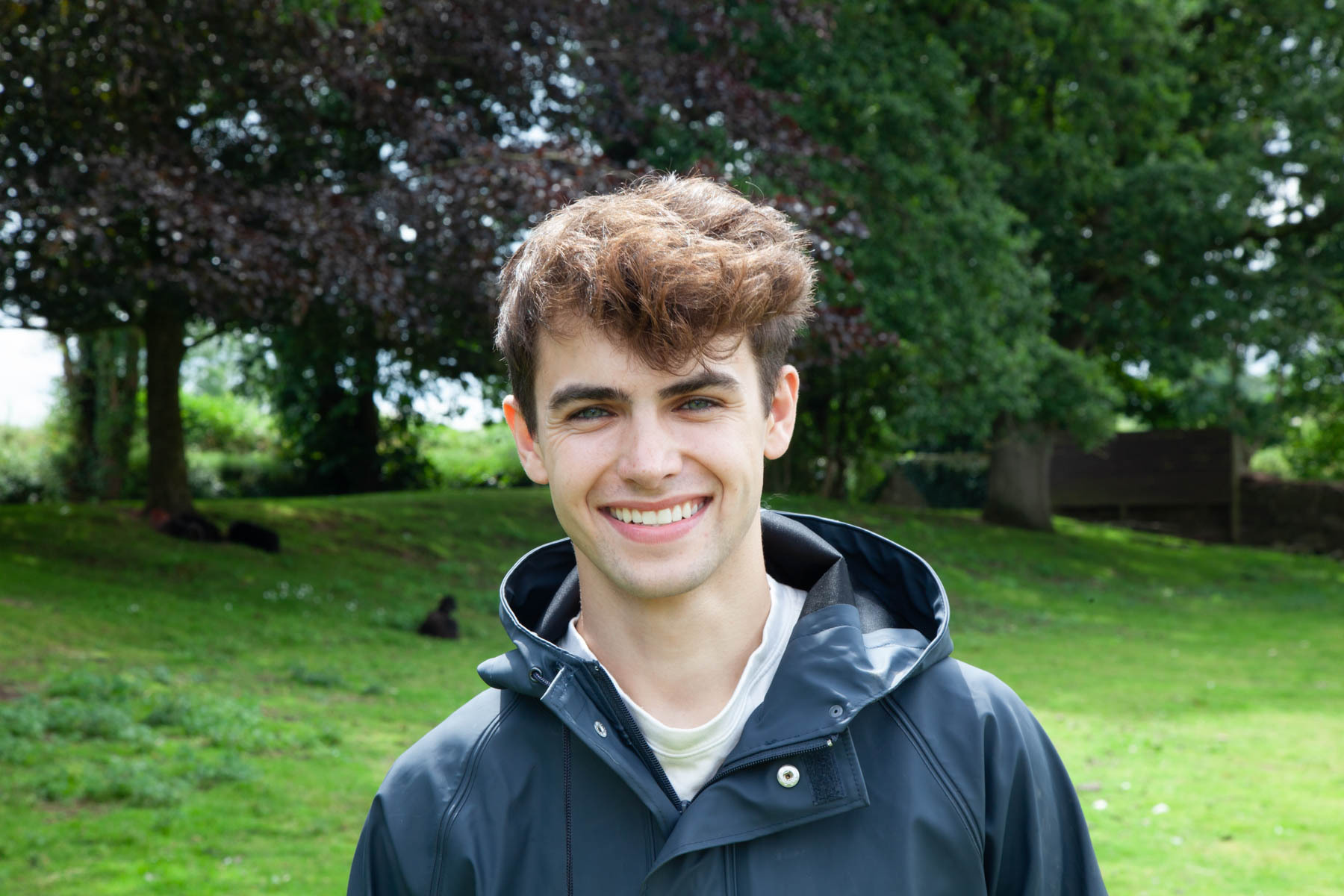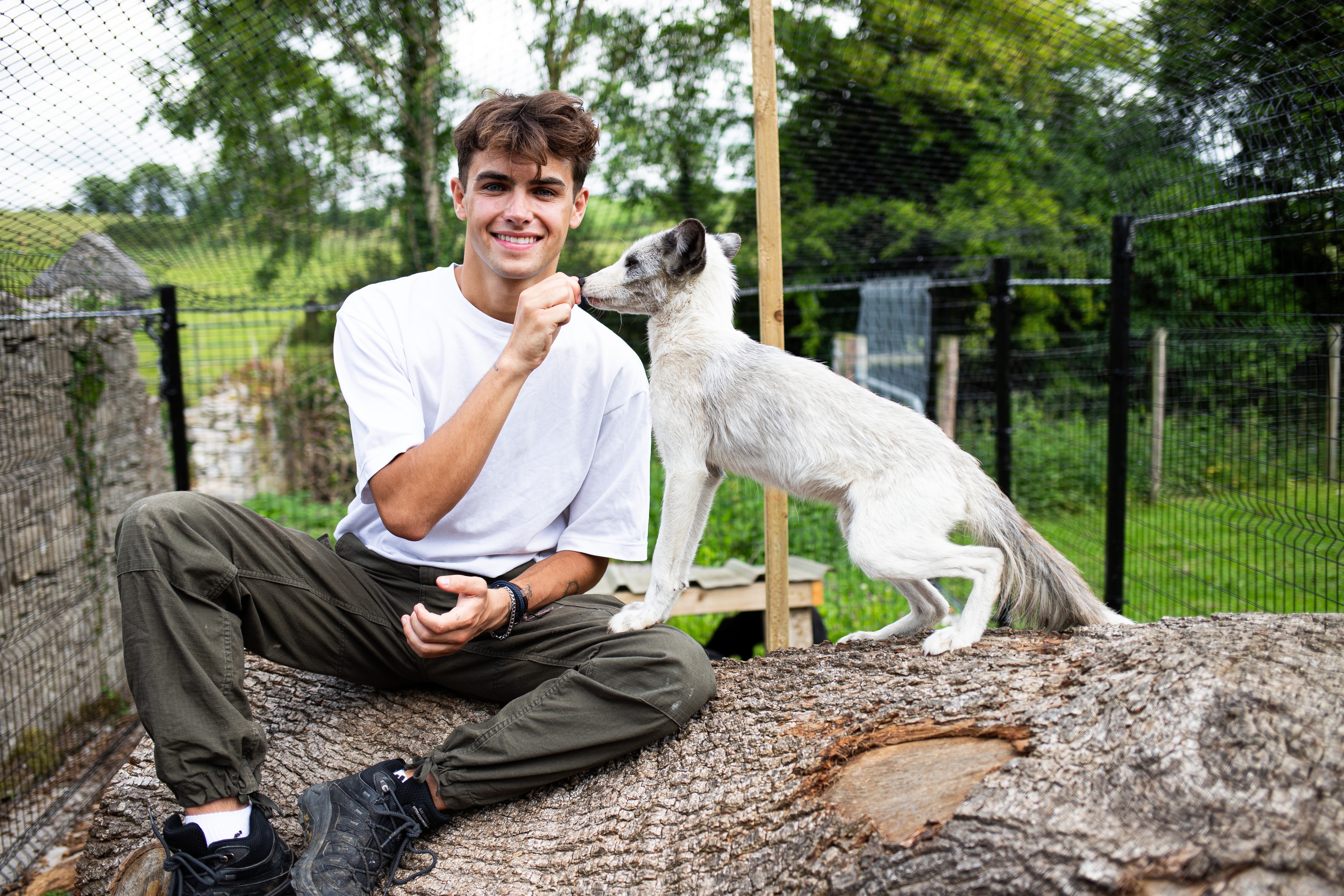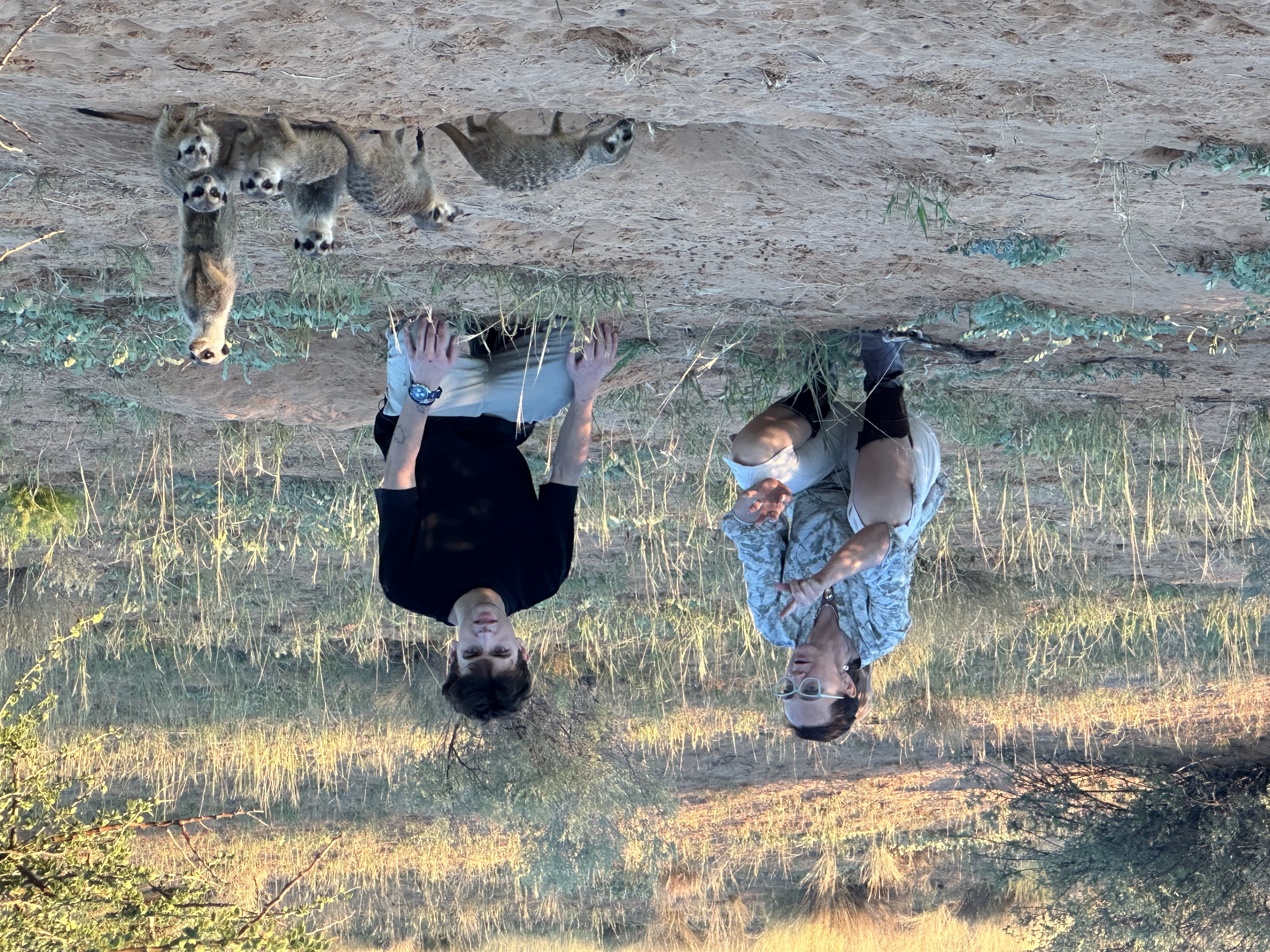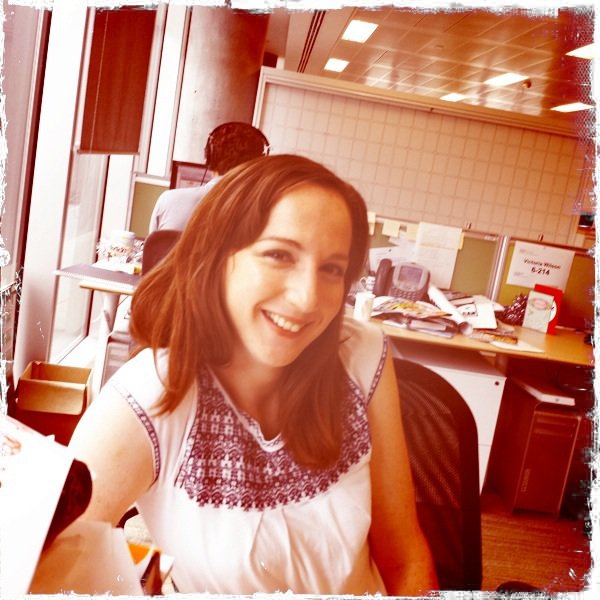We Built a Zoo: release date, trailer, interview with Kyle Thomas and everything we know
In We Built a Zoo, Kyle Thomas faces his controversial past as he helps create a wildlife sanctuary in Northern Ireland…

We Built a Zoo — exclusive interview with Kyle Thomas
At the age of twelve Kyle Thomas started making online videos for fun, amassed a legion of followers, and went on to become the UK’s highest-earning teenage TikToker. Yet when he started posting about his menagerie of exotic pets - including a Capybara called Queen Elizabeth, who tragically passed away in 2022 - he faced public backlash.
We Built a Zoo follows Kyle as he teams up with no-nonsense Northern Ireland builder and petting zoo owner Phil Hughes to create a world-class wildlife park in County Tyrone.
During the hour-long film, he mucks in with all elements of animal care and helps build new enclosures. He also travels to South Africa and Costa Rica for hands-on experience in running a wildlife park. And, after a lot of hard graft, inspectors grant ‘The Mylo Project’ a zoo licence.
Speaking exclusively to What to Watch, Kyle Thomas, whose focus today is on animal conversation, told us why he wanted to make the BBC3 film.
Here Kyle, 20, guides us through his one-off special We Built a Zoo…
We Built a Zoo release date
We Built a Zoo is available to watch on BBC3 on Wednesday, October 2 at 9pm. It will also be released on BBC iPlayer.
The latest updates, reviews and unmissable series to watch and more!
We Built a Zoo trailer
The trailer for We Built a Zoo sees Kyle give a very honest account for how his show came about and the ups and downs he has had along the way. You can watch below...
Kyle on why he wanted to make We Built a Zoo and addressing the controversy that brought him to this point in his life
“I was 15 years old when I had the majority of the exotic pets. I love animals and the idea of being around them and living with them seemed amazing,” explains Kyle, who has 35 million TikTok followers, is a part-time model, and an animal conservationist.
“As that went on, I realised that there's a really dark side to the trading of exotic pets, and it wasn't something that aligned with who I was.”
Kyle on his journey of learning
“I think the biggest thing for me is learning to be an animal lover and an animal advocate for the best interest of the animals, and not for myself. I think it's so easy for everyone to say, ‘I'm an animal lover,’ but you love those animals because of the way they make you feel. I'm now on a journey of learning to be an animal lover who’s an advocate for their best interests."
Kyle on sharing what he’s learned
“No matter how hard you try, a house is never going to be a natural environment. Even in the wildlife park, you still have to go through extremes to make it work for the animals. I am learning myself and viewers can witness that change and learn with me. I'm not an expert. I'm not trying to be an expert. I'm learning as I go. And the great thing is, I can deliver all of that information back to the viewer, they can learn with me, and we're on this journey together.”
On the merits of a TV documentary over social media
“I wanted to make the show because it's actually much more authentic than social media, just because social media is so short. When you post 15 seconds of anything you're doing, especially with animals, you're posting the best 15 seconds and it’s the stuff that people want to see. With TV we were able to get every emotion in, every crisis, which means that when people watch it they see all of the sides of looking after animals, rather than just the pretty, cutesy side.”

Kyle on mucking in with all elements of animal care, from poo cleaning duties to building new enclosures and working with vets.
“I have learned so much about all of the practical side of things, from construction and tractors to farming and caring for goats hooves. I've also learned I’m probably not going to be doing any more bricklaying [something he attempts in the film] - it’s way too heavy! I thought that they were breeze blocks, which aren’t so heavy. I went to pick one up with confidence, but I couldn’t. It was mortifying!”
“In Costa Rica I was learning about how to take bloods from sloths and about how, when it comes to moving some animals, the injections that you've got to give them beforehand to make sure that they don't suffer stress myopathy.
“I'm learning all of this technical and really boring stuff to some people, but I love it. I would never close off the idea of me going and studying something like that. This really is where my interest is and what I love doing.”
On working with Phil Hughes
“Phil couldn’t be more different to me and I couldn’t be more different to him, but our love for animals has connected us. It’s definitely been an unforeseen friendship. He doesn’t care about social media, Milan Fashion Week or anything like that. I’m just a guy who loves animals and doesn't mind picking up poo! I’ve learned so much from him.”
More on travelling to Costa Rica and South Africa for hands-on experience in running a wildlife park
“I went to a wildlife rehabilitation sanctuary in Costa Rica, which you can see in the show, and it was great. I learned so much. I was in the clinic while they were doing veterinary work, going out to wildlife rescues, releasing animals. It was really amazing. And again, a very eye-opening thing for me, because nothing beats seeing animals in the wild and knowing that that's what I always want to advocate for.
“Alma, who I met in South Africa, is incredible. Literally, just before this interview, I got told that she rescued a leopard last weekend. One of the goals that we have is, if we have meerkats, for example, let those meerkats be ambassadors for their native cousins. Let's raise awareness about projects which are abroad and help those animals.”

Kyle on the main components of a healthy, thriving zoo or sanctuary
“When it comes to animal care it's keeping things as natural as possible. That's why I went to Africa for the meerkats, and why I'll be going to other places. We’re not the wild, we're not Africa, we're not Costa Rica, we're not the Amazon rainforest, but how can we try and best replicate that? How can we make sure the diets are spot on? It’s also respecting the fact we're not the wild, that the animals don’t have hundreds of acres of space, so what are we going to do then? How do we come up with other ways for enrichment, such as hiding their food, and keeping things stimulating and different for them, so that they aren't sitting in enclosures bored.”
On the animals currently living at the sanctuary
“We have meerkats, marmosets, a ton of reptiles, frilled neck lizards, bearded dragons, iguanas, a Chinese water dragon, some bunnies, ferrets. We have deer, foxes, pigs and goats. Wallabies, a macaw, a gala parrot. We have tenrics - they are small animals from Madagascar that look like hedgehogs but are not related to hedgehogs. We also have African pygmy hedgehogs, stick insects, snakes… it goes on!”
Now inspectors have granted ‘The Mylo Project’ a licence, what’s next?
“A lot of people ask us, ‘What animals are next?’ But it is less about what animals are next and thinking how do we make these animals' lives better. How do we make sure they've got more and more space? Are we utilising all of the things that we've got? We have just started building a new enclosure for the marmosets, for example.
“When it comes to animals next, it's about which animals really need our help and can benefit most from what we're doing. If somebody came tomorrow and said, ‘I've got four meerkats, I'm giving them up, will you take them?’ We want to have the space for that. We don't want to fill the place up with animals that actually don’t need our help. We want to have the space for rescue animals, because it would be awful to turn away animals that really, really need help."
On the message for visitors to The Mylo Project
“Come and meet the animals, and have that human connection. But while you do that, let our keepers talk to you about the fact that they really need your help, or why you shouldn't have them as pets and all of these different things. There are so many exotics in the UK and Northern Ireland, and a lot of those animals are being given up. Phil and I have the same mission: to help animals and raise awareness. We want to be a facility that can take them in and ambassadors to stop it happening again."

With over twenty years of experience as an entertainment journalist, Elaine writes for What’s on TV, TV Times, TV & Satellite Week and www.whattowatch.com covering a variety of programs from gardening and wildlife to documentaries and drama.
As well as active involvement in the WTW family’s social media accounts, she has been known to get chatty on the red carpet and wander into the odd podcast.
After a day of previewing TV, writing about TV and interviewing TV stars, Elaine likes nothing than to relax… by watching TV.

